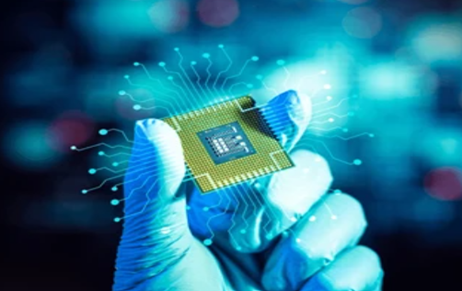Currently, semiconductors act as the foundation for advancements in the technological field such as smartphone…
Integrated Circuit Layouts and Designs
Introduction
An integrated circuit (IC) layout design is the three-dimensional arrangement of the components and interconnections that make up the IC. An integrated circuit (IC) is an electronic circuit in which the circuit’s parts are integrated into some media and act as a single unit. A solid semiconductor, generally silicon, is utilized as the medium. The circuit may be incorporated into a small, thin piece of silicon that is as thin as a wafer thanks to the manufacturing process. A “silicon chip” is a chunk of silicon like this. Because all commercial integrated circuits now accessible are manufactured from semiconductors, mainly silicon, the words “semiconductor” and “silicon chip” have been used interchangeably with “integrated circuit.” Many devices use integrated circuits, including watches, TVs, traffic lights, and, of course, computers. Original layout designs are protected under the Semiconductor Integrated Circuits Layout-Design Act of 2000 and the Semiconductor Integrated Circuits Layout-Design Rules of 2001.
The terms “semiconductor integrated circuit” and “layout-design” are defined as follows in the Act:
A product with transistors and other circuitry elements that are inseparably produced on semiconductor material, an insulating material, or inside the semiconductor material and designed to execute an electronic circuitry function is referred to as a semiconductor integrated circuit.
A layout of transistors and other circuitry parts, including lead wires linking such elements, represented in any way in a semiconductor integrated circuit is referred to as layout design.
Criteria of registrability of Layout Design
Original, distinct, and able to stand out from other layout designs.
A layout design is unique if it is the outcome of the creator’s own intellectual work and is not widely used among layout designers and integrated circuit makers at the time of its development. A layout design that consists of a common combination of parts and interconnections among layout-design makers and manufacturers of semiconductor integrated circuits is deemed original if the combination as a whole is the result of the creator’s own intellectual work.
The Act prohibits the registration of layout designs that are not original; or that have been commercially exploited anywhere in India or in a conventional country; or that are not inherently distinctive; or that are not inherently capable of being distinguished from any other registered layout design.
Provided, however, that for the purposes of this Act, a layout design that has been commercially exploited for not more than two years from the date on which an application for its registration has been filed either in India or in a conventional country is treated as not having been commercially exploited.
A layout design can only be registered for ten years from the date of submitting an application for registration or the date of first commercial exploitation anywhere in India or in any nation, whichever comes first.
The Indian Semiconductor Integrated Circuits Layout-Design Registry is now based in New Delhi and is administered by the Department of Information Technology (DIT), Ministry of Communications and Information Technology.
Violation of Layout Design
In India, a violation of a Layout-Design is regarded as a criminal offense in addition to the legal remedies available. Under the (Indian) Semiconductor for Integrated Circuits Layout-Designs Act, 2000, infringement of a registered layout-design is punished by up to three years in jail or a fine of Rs 50,000 (about US$ 800) up to a maximum of Rs 10,00,000 (approximately US$ 16,000), or both.
Status of Layout Designs in India
Though India has followed the regulations of the TRIPS agreement regarding the protection of semiconductor integrated circuit and layout design and passed the act. But still, there is some lack with implementation as people are not aware of the concept. When an invention is done it is clear that it is to be patented when an artistic, cinematographic, and literary composition is done it is copyrighted but when integrated circuits are made it puts the makers in a dilemma whether to do a patent or an IC design registration. And here the lack of awareness comes into play and people pick patent over IC designs. The way ordinary people are able to connect with other IPs like Trademark, Patent, and copyright it’s not the same with this IP. This IP fills the void between patent and copyright. Any object or particle that is original and novel falls under Patent while Integrated circuits are only expected to be original and it’s not needed to be novel, whereas comparatively copyright is too general.
Conclusion
Intellectual property protection for Integrated Circuit layout design is important all around the world, but especially so in India, where there are no strong intellectual property protection laws in place for software. Even though it has been more than 20 years since the implementation of this act there are not many advancements that are to be seen in this particular niche of Intellectual Property. The IPO needs to take this fact into consideration and take action towards making the process easy, formulating guidelines, they need to make initiatives to explain that why one should pick this IP over other and prioritize the need of people instead of just an obligatory enactment.
Author: Ayushi – a student of Dr. DY Patil Law College, an intern at IIPRD, in case of any queries please contact/write back to us via email at vidushi@khuranaandkhurana.com



